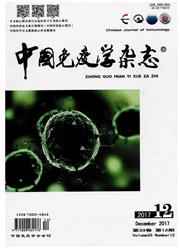

 中文摘要:
中文摘要:
目的:探讨内毒素脂多糖(Lipopolysaccharide,LPS)对大鼠雪旺氏细胞(Schwann cells,Scs)诱导型一氧化氮合酶(Inducible nitric-oxide synthase,iNOS)基因表达及一氧化氮(Nitric oxide,NO)生成的影响。方法:用不同浓度(1、10、100μg/ml)和同一浓度不同时间(1、2、4、6小时)的LPS刺激雪旺氏细胞,分别用RT-PCR和亚硝酸盐含量测定观察细胞iNOS mRNA的表达量和细胞培养液中亚硝酸盐的水平,同时用免疫荧光细胞化学染色检测iNOS的细胞定位。结果:用LPS10μg/ml刺激2小时后,iNOS mRNA的表达增加,4小时表达活性最高。细胞上清中的亚硝酸盐含量高峰在6小时。免疫细胞化学证明LPS诱导雪旺氏细胞iNOS的表达定位在胞浆。结论:LPS可在转录水平上诱导雪旺氏细胞iNOS mRNA表达,促进NO的合成,提示雪旺氏细胞在周围神经系统炎症过程中可能发挥免疫调节作用。
 英文摘要:
英文摘要:
Objective:To explore the effect of lipopolysaccharide (LPS) on the expression of inducible nitric oxide synthase (iNOS) gene and nitric oxide (NO) production in rat Schwann cells. Metbods:Schwann cells were treated with LPS at different concentration (1,10,100μg/ml) and at the same concentration (10 μg/ml) for different time (1,2,4,6 h). With RT-PCR and measurement of nitrite, the expression of iNOS gene and the level of nitrite in the culture medium were observed . Intracellular location of iNOS was detected under confocal microscope. Results:iNOS mRNA increased after 2 h exposure to LPS ( 10 μg/ml ) , and peaked at 4 h. The peak of nitrite in the supernatant was at 6 h. Immunocytochemical staining indicated the expression of iNOS was located in the cytoplasm following LPS induction. Conclusion: Bacterial causative agent-LPS could induce the expression of iNOS mRNA in rat Schwann cells at transcription level and lead to the synthesis of NO. It was showed that Schwann cells may play a role for immunoregulation after inflammation in the peripheral nerve system.
 同期刊论文项目
同期刊论文项目
 同项目期刊论文
同项目期刊论文
 期刊信息
期刊信息
